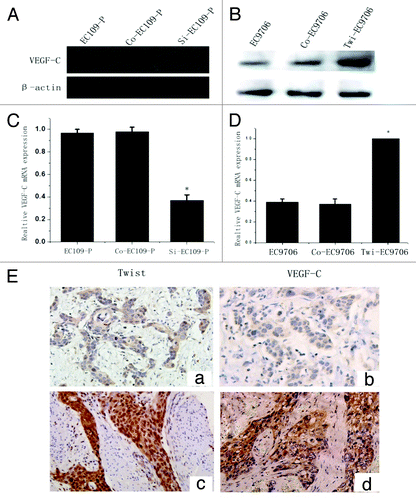Figures & data
Figure 1. Expression of twist in ESCC tissues. (A) IHC analysis of twist in ESCC with or without LN metastasis. (a) Negative staining in normal esophageal tissue; (b-c) Strong nuclear staining in primary sites of metastatic ESCC cancer; (d-e) Moderate staining in the cytoplasm but negative nuclear staining in primary ESCC cancer sites without LN metastasis. (f) Negative control. (Original magnification, 200 × ). (B) WB analysis of twist expression in primary ESCC tissues (T) with or without LN metastasis and matched nontumorous tissues (N). Twist showed much higher expression in T compared with N and was stronger in primary ESCC with LN metastasis (T1, T2) than without LN metastasis (T3, T4). Four representatives are shown. β-actin was used as an internal control.
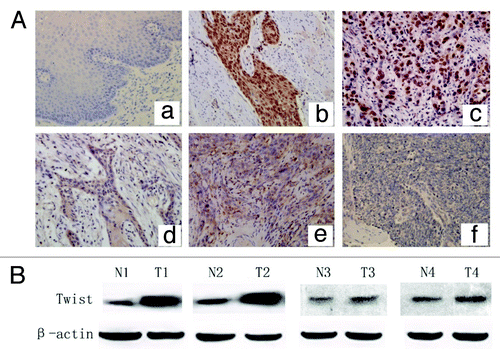
Table 1. The twist expression associated with patients’ clinical features
Figure 2. Expression of twist in ESCC cell lines. (A)Western blot and (B) real time PCR analysis of twist expression in ESCC cell lines EC9706, EC109 and EC109-P. β-actin was used as a loading control. (C and D) Transwell assays analysis of the invasion ability of ESCC cell lines. (E) Immunofluorescence analysis of twist in ESCC cell lines. The values presented are the means of three determinations (Original magnification, 400x). abStatistical significance (ap < 0.05 vs. EC9706 and bp < 0.05 vs. EC109).
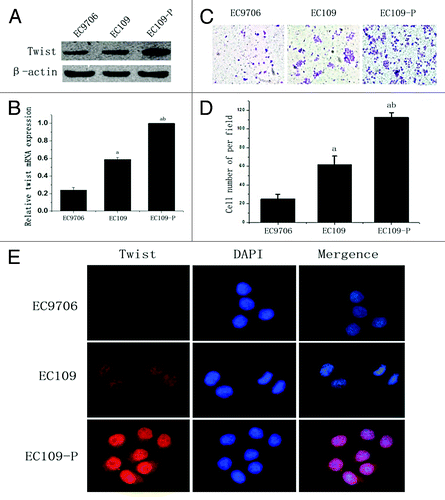
Figure 3. Decreased invasion ability of EC109-P cells by inhibiting twist expression. (A) western blot and (B) real time PCR analysis of twist expression in siRNA transfected EC109-P cells and controls. (C and D) Transwell assays for siRNA transfected cells and controls. A representative of each one is presented (Original magnification, 100x). The mean values of three repetitions are presented. *Statistical significance (p < 0.05, Si-EC109-P vs. EC109-P or Con-EC109-P cells).
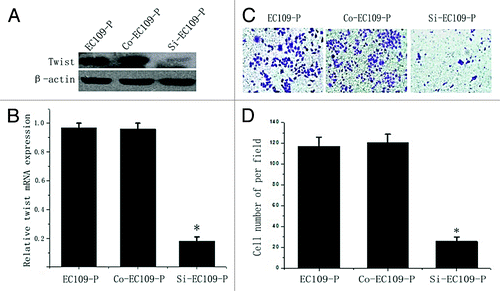
Figure 4. Enhancing the invasion ability of EC9706 cells by the upregulation of twist expression. (A) western blot and (B) real time PCR analysis of twist expression in twist overexpression plasmid transfected EC9706 cells and controls. (C) Transwell assays for twist overexpressing EC9706 cells and controls. A representative of each one is shown. (D) The mean values of three times was presented. *Statistical significance (p < 0.05, Twi-EC9706 vs. EC9706 or Con- EC9706 cells).
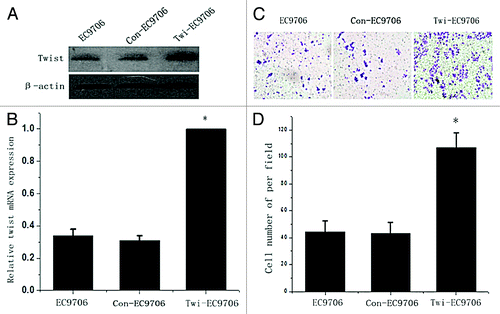
Figure 5. Twist regulates VEGF-C expression in ESCC cells and tissues. (A and B) WB analysis of VEGF-C protein expression in twist down and upregulated cells. β-actin was used as a loading control. (C and D) Relative VEGF-C mRNA expression in twist down and upregulated cells by real time PCR analysis. (E) Co-expression of twist and VEGF-C in ESCC tissues. (a) Negative twist expression in the nucleus correlated with (b) lower VEGF-C expressionin the same patients. (c) Strong twist expression in the nucleus correlated with (d) high VEGF-C expression in the same samples (Original magnification, 200x).
